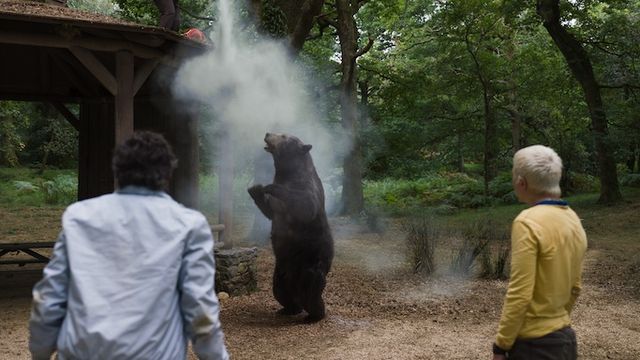By now, you won’t have escaped the most hyped film of the year (admittedly, it is only February): Cocaine Bear. From the mirth that met its announcement in April 2022, to the incredulous response when the trailer dropped in November, there was a genuine sense of disbelief around the Elizabeth Banks-directed film. Had they actually made a feature-length film about a bear who consumed a load of cocaine in a forest in Georgia?
Yes, they have. And while at first glance, it might be a flight of fancy in the vein of Snakes On The Plane or Sharknado, what makes Cocaine Bear’s story even more incredible is that it’s based on a true story. So how did we get to the point where a member of the animal kingdom turned into Scarface? Let’s find out.
How did the bear get hold of the cocaine?
Back in 1985, a former narcotics officer turned drug smuggler called Andrew C. Thornton II came up with the scam of smuggling drugs from Columbia into the US by dropping the packages of cocaine out of a plane into the Tennessee Valley in Georgia.
On September 11, Thornton and an accomplice took off from the South American country in an auto-piloted Cessna 404 Titan plane stuffed with blocks of coke. The pair dropped a load in Blairsville, northern Georgia, then ditched 40 containers into the wilderness of Chattahoochee National Forest (the FBI presumes because the weight made the plane too heavy) and Thornton was set to parachute-jump from the plane.
However, things did not go to plan. Despite being decked out in night-goggles and a bullet-proof vest - not forgetting his Gucci loafers - Thornton whacked his head on the tail of the plane and then his parachute failed to open. His body was found - along with $4,500 in cash, a couple of guns and knives - in a neighbourhood in Knoxville, Tennessee.
The plane crashed into the hills of North Carolina, and authorities managed to put Thornton and the crash together. They worked out the flight path, and managed to find nine of the duffle bags of coke, but Pablo Escobear, as he came to be known, had snarfed the rest of the bags.
What happened when the bear cut loose?
Oh mate, it’s not a good end to the sesh. On December 23, the Georgia Bureau of Investigation discovered a dead black bear. According to an autopsy at the time, the bear had ingested around 34 kilograms of the white stuff, with a street value of around $2 million. According to The Independent, the medical examiner at the time said: “Its stomach was literally packed to the brim with cocaine. There isn’t a mammal on the planet that could survive that.” And he didn’t even go out on an epic high, instead, sadly, he probably died in pain, of shock, and with his body shutting down. “Cerebral haemorrhaging, respiratory failure, hyperthermia, renal failure, heart failure, stroke,” continued the medical examiner. “You name it, that bear had it.”
Does Cocaine Bear live on (in spirit)?
Yes, of sorts. In a weird sequence of events, the bear was taxidermied, and donated to the Chattahoochee River National Recreation Centre before ending up in a Nashville pawn shop. Here, the country singer Waylon Jennings gifted it to a friend in Las Vegas, then when that friend died, another man, Zhu T’ang, bought it at an estate auction for $200.
When T’ang died in 2012, a “fun mall” called Kentucky For Kentucky stepped in and bought it. To say they’re dining out on the story is an understatement; as well as posing for photos with the actual bear, there’s a whole warehouse full of merch on offer, from a Cocaine Bear ‘blow’ snowglobe or Cocaine Bear soap, to ‘I partied with Cocaine Bear’ beercan coolers and ‘I love you Beary much’ earrings. Oh, humans. What are they like, eh?
Rest in powder, big bear.
‘Cocaine Bear’ is released into the wild in cinemas on February 24















